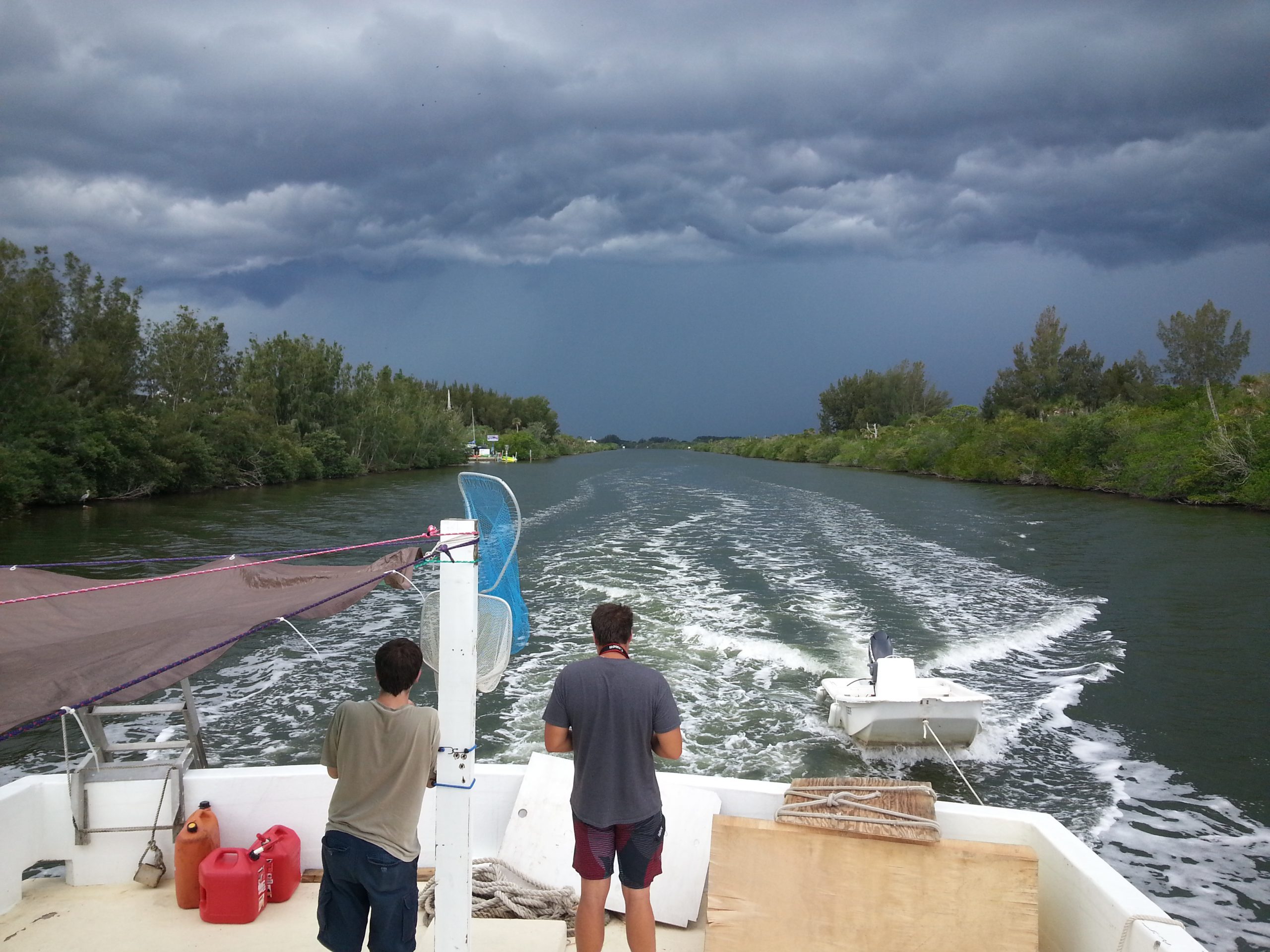OES Field Projects
Above: DMES seniors Alex Nickerson and Kaikea Nakachi look out at the approaching storm while on the Field Projects research cruise.
Toward the end of Department of Marine and Environmental Systems (DMES) students’ academic career, in the summer between their junior and senior years, they usually have to complete their Field Projects course. The projects start in May, a week after the end of the spring semester, and they end mid-June. While many past students may gripe and complain and try to scare up-and-coming DMES juniors, the experience (while admittedly a lot of work) is also a lot of fun.
During the spring semester prior to Field Projects, students have to take a Field Projects Proposal class, where they work on how to form hypotheses, find research articles and work on proposals for their summer research. Also, the Field Projects professors come in and talk for a bit about their research so that you can request which professors you’d like to work with, based on your interests.
There are four main categories for Field Projects: Environmental Science, Oceanography, Meteorology, and Ocean Engineering. Students studying the sciences go into one group and the engineering students go into another. Most of what I’m going to talk about here is the Sciences group because that was the group I was a part of.
Field Projects, as the name would suggest, involves a lot of field research. You get to go out and collect data before analyzing it back in the labs. This past year, we had four main professors, of which you worked with three directly: Kevin Johnson, Carlton Parks, Pallav Ray and George Maul. All four study different things, so you get a very diverse set of projects for the summer, which is really cool as it lets you learn a ton of new stuff. Also, if you want to work with another professor or an outside agency (as part of an internship, for example), you also have that option, but it requires approval well in advance from the head Field Projects professor and additional work to get it approved.

On Johnson’s days, students conducted seagrass surveys and sediment grabs and collected drift algae. Parks’s days were all about meteorology. Students could monitor weather radar data or other meteorological data obtained through the school’s equipment or from weather agencies such as NOAA or the NWS. Ray’s days focused on the interactions between weather and climate, weather patterns and environmental processes, and El Niño. Maul’s days were primarily about coastal processes and beach erosion. His students went to the beach every week and profiled the coastline.
In addition to regular meetings with the professors you worked with, every student also was required to participate in a research cruise with Kelli Hunsucker. Every student spent three nights on the boat, helping in collecting water quality data from various sites throughout the Indian River Lagoon.
Field Projects is definitely a one-of-a-kind undergraduate research experience. I learned so much this summer and I had a great time getting to know some amazing people in my department. Over the course of the year, I hope to share with you guys some of the stories, experiences, and research from not only my Field Projects experience but those of my colleagues as well.






nice efforts by the DMES’s students. I really appreciate it.